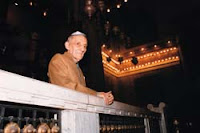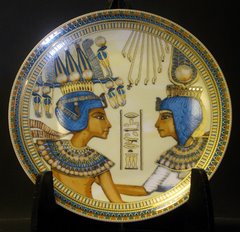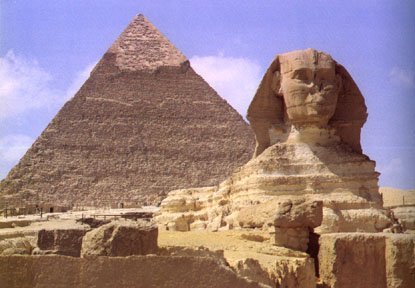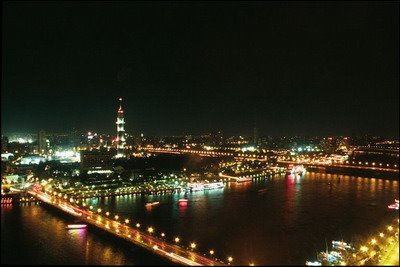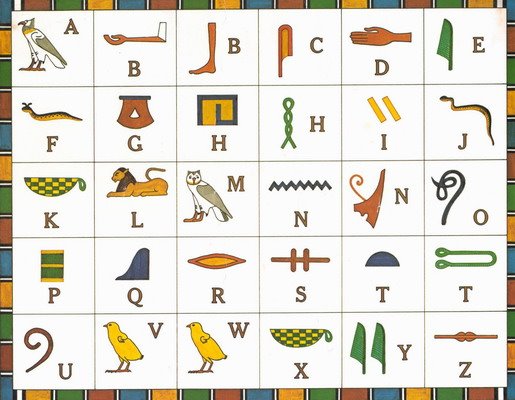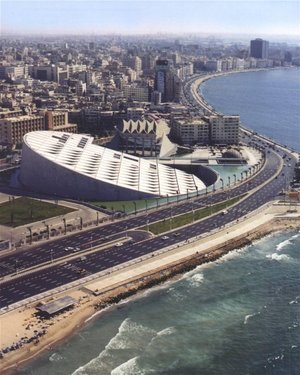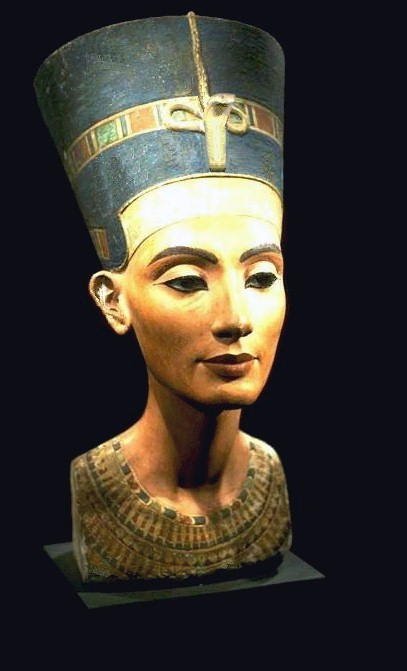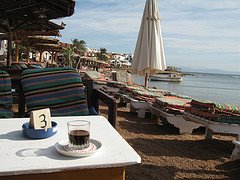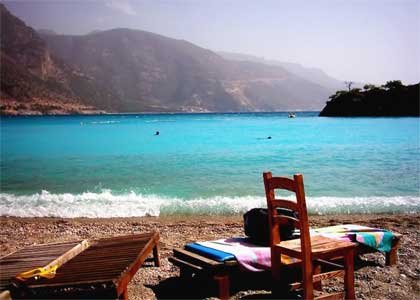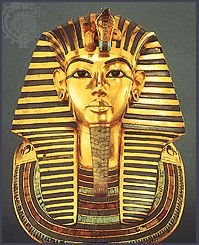
The Pyramids and their guardian Sphinx have rivaled the world's greatest cathedrals and temples as hallowed monuments, and were regarded as one of the Seven Wonders of the Ancient World. The Pyramids unified life and death, heaven and earth, gods and humanity, light and dark. The Great Pyramid built by King Khufu (Cheops in Greek) the second King of the IV Dynasty (ruled 2551-2528 B.C.) covers an area of 13 acres. Its original height of 146 meters has now become 137 meters after the erosion of its summit. It consists of two million blocks of limestone ranging in weight from 2.5 tons to 15 tons.The Second Pyramid was built by King Khafra (Chephren in Greek, ruled 2520- 2494 B.C.) Although smaller than the Great Pyramid, it seems equally tall and imposing due to its fortunate site higher on the plateau. Its interior is simple with two entrances on the north side. Part of the pyramid still bear traces of the outer limestone casing that once covered all of the Pyramids. The Third Pyramid of King Menkaura(Mycerinus in Greek, ruled 2490 - 2472 B.C) is smaller in size than its predecessors and never finished. Its height is 62 meters. It is distinguished by the fact that the lower parts of its sides still retain their granite slab coverings.

Pyramids Sound & Light
show begins with the story of the Sphinx who has been the vigilant guardian of the city of the dead for five thousand years. The show depicts the building story of Kheops, Kephren, Mykerinos pyramids and tells about the legendary harmonic personalities such as Nefertiti, Thutmosis 4th, Akhnaten, and Tut Ankh Am on.
the Sound and Light Show gives you a chance to see them illuminated in the darkness of evening.
The Show is presented in a different language at each time slot, so when booking, make sure you choose a showing in a language you can understand!
The Show consists of a recorded commentary which tells the story of the Egyptians. The commentary is illustrated by still images (photos and
illustrations) projected on to the wall of the temple. At key points in the
narrative, one or more of the pyramids is illuminated with a colored floodlight. Recorded music is also used. There are no live musicians or actors .
The only animation is when the Sphinx speaks, which is quite impressive. Thanks to a clever projection, the face of the Sphinx comes alive as you hear the words of a long-dead Pharaoh. It's a pity that moving images aren't used more in the rest of the show.
To see the show, you have the choice of theatre-style seating, or a seat in the cafe at the rear. The cafe is recommended (although your view will not be as good), because parts of the show do drag and you will be able to entertain yourself with refreshments. If you choose the theatre-style seating, arrive early to get the best seats at the very front.
Please remember that night-time in the desert is COLD, and it will feel worse than it really is, because you have become used to the Egyptian heat during the day. You probably did not bring a scarf and gloves on your Egyptian holiday, but you will wish you did. If you don't have warm clothing, wear two or three tee-shirts on top of each other, a jumper and coat if you have them, long pants and closed-in shoes. If you can bring a blanket, do so.
Because the night is dark and you are sitting some distance from the Sphinx and the pyramids, don't have too many expectations of getting good photos, if you only have a "point and click" camera.

The Solar Boats (The Boats of Cheops)
The Ancient Egyptians carved spacious areas in the rock, near the Pyramids. There they placed wooden boats, to be at the disposal of the king when he went on his journey of Day and Night with the Sun God, Ra, in the after world.
Early excavations have discovered three such sun boat sites, on the east side of the Great Pyramid. Two other sites were discovered on the south side. When the huge stone slabs were removed, they revealed parts of a large boat, made of cedar wood, in a very good condition. There were also other implements, such as oars, ropes and a kiosk for sitting. The boat was 43.5 meters long, the prow and stern were 5 meters and 7 meters high respectively. The boats are now housed in a special museum, south of the Pyramid of Cheops. The museum is open from 9-4 daily, for a fixed fee.
The Egyptian museum

The mummies of some pharaohs of the 18 to 20th Dynasty found in Thebes. The first group was found in Deir el Bahari cachette and these consist of the mummies of: Seqenenre, Ahmose I, Amenhotep I, Tuthmosis I, Tuthmosis II, Tuthmosis III, Seti I, Ramses II, Ramses III.The other group was found in the tomb of Amenhotep II, consisting of the mummies of: Amenhotep II, Tuthmosis IV, Amenhotep III, Merenptah, Seti II, Siptah, Ramses IV, Ramses V, Ramses VI
in the museum you can see
RAMSES II

The most celebrated of all the pharaohs, Ramses II, is famous for his long reign. The numerous temples which he erected in Egypt and Nubia and his omnipresent colossi had perpetuated his cult until the end of pharaonic Egypt. This bust from a seated statue of Ramses II is a portrait of the young king in which grace and grandeur are intermixed. His face is framed by a rounded wig, covered with curls, and a band with a uraeus encircles it. The position of his body, slightly bent forward is a sign of reverence towards the gods. It is a sign of humility which is inherited from the time of Seti I, but Ramses II quickly abandoned it in later representations.

THE QUEEN MERIT-AMON
This statue was originally known as the " white queen " until it was identified as Merit-Amon, daughter of Ramses II. A youthful grace, a gentle smile, and perfect manufacturing underline the beauty of this statue. She wears a tripartite wig held together by a double band which supports the double uraei. A circular head base surrounded by a frieze of uraei would have supported the large disk and the double feathers that are customary queen's headdresses. She grasps a " menat " necklace, with a counterpoise in the form of the goddess Hathor indicating that she was a priestess associated with the cult of this goddess.
THE GOLD MASK OF TUTANKHAMON

This marvellous, life size mask, of excellent workmanship, protected the head of Tutankhamon's mummy. His shoulders and the back of his mask are inscribed with a magic formula that ensures protection. The golden nemes headdress is striped in blue and green while the uraeus and vulture head, in gold inlaid with semi-precious stones and coloured glass, ornament the brow. The mask's eyes are made of obsidian and quartz with a touch of red at the corners. The divine beard, is made of cloisonn? work. The ears are pierced for the wearing of earrings. The wide necklace collar is formed of rows of lapis lazuli, quartz, amazonite and coloured glass beads attached at each shoulder to a gold falcon's head ornamented with obsidian.
Selket

Selket is the goddess of healing stings and bites. This is one of four goddesses who, with gracefully outstretched arms, protect the gilded wooden shrine set within a baldachin, to house the alabaster chest containing the king's viscera. The statuette is made of gilded wood and it's eyes and eyebrows are painted black. Selket turns her head slightly to the side to ward off danger and thus breaks away from the traditional frontal pose of royal statuary. Her costume is that of contemporary queens, and the Amarna influence is still evident in the modeling of the body and the features of the face.

The Cairo Tower
The Cairo Tower is open the hours: 9am-midnight daily (winter); 9am-1am daily (summer). It is located on an island in the Nile and it offers tremendous views of the city of Cairo. There is a restaurant at the top of the tower that revolves around also if you feel like getting a bite to eat while you are there.
The Pharaonic Village

Take a step back in time; about three thousand years back, to be exact. Just a few miles from the center of Cairo is a time machine waiting to take you on a fantastic journey to the days of the Pharaohs, a time brought to life by an incredible group of actors and actresses, faithful and exact reproductions of buildings, clothing, and lifestyles.












